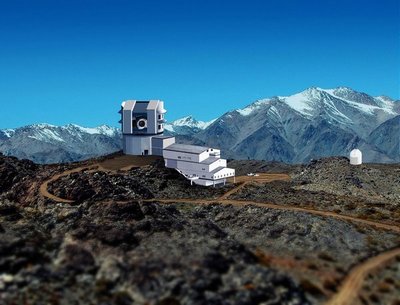August 19, 2010
National Research Council endorses project in which UW is a major player
The National Research Council has endorsed a major telescope project in which the UW is a key player as a priority among science projects to receive federal funding in the next decade. The UW is one of four founding institutions for the project.
“This will give the green light for the National Science Foundation leadership to get us the construction funding that we need in the next year or two,” said Zeljko Ivezić, a UW astronomy professor and the system scientist for the telescope project.
The Large Synoptic Survey Telescope is expected to photograph the visible Southern Hemisphere sky every three nights. With a mirror that is 8.4 meters across and a 3 billion-pixel digital camera, it will produce images in multiple colors that are seven times the width of the full moon.
Because it will produce full scans of the sky so often, astronomers will be able to closely track distant phenomena such as supernovas or nearby hazards such as asteroids crossing Earth’s orbital path. Project leaders plan to share all information with the public.
Andrew Connolly, a UW associate professor of astronomy and the Large Synoptic Survey’s image simulations scientist, said the project “will enable students and researchers in our department to explore many unknowns, from the detection of stars at the edge of our own galaxy to the nature of the dark energy that drives the acceleration of our universe.”
The telescope is to be built on Cerro Pachón, a nearly 9,000-foot peak in the Andes Mountains of northern Chile. Software innovator Charles Simonyi and Microsoft Corp. co-founder Bill Gates already have pledged substantial support for the project, which is planned to be funded as a public-private partnership. If federal funding comes in the next year or two, the telescope could begin operating in 2016 or 2017, Ivezić said.
Besides UW, other founding members are the University of Arizona, the National Optical Astronomy Observatory and the Research Corporation for Science Advancement. The telescope has been in planning stages for a decade and the founding members formed a corporation in 2003. Today there are more than 30 institutional members.
“This shows that the UW in general and the astronomy department specifically has the intuition to pick the right project,” Ivezić said. “This is all part of a long-term vision and is the result of strategic planning and careful steps.”

